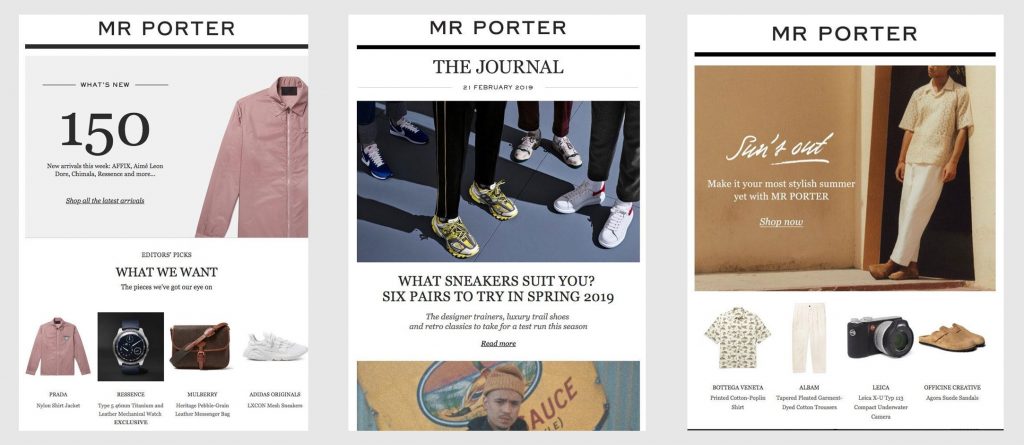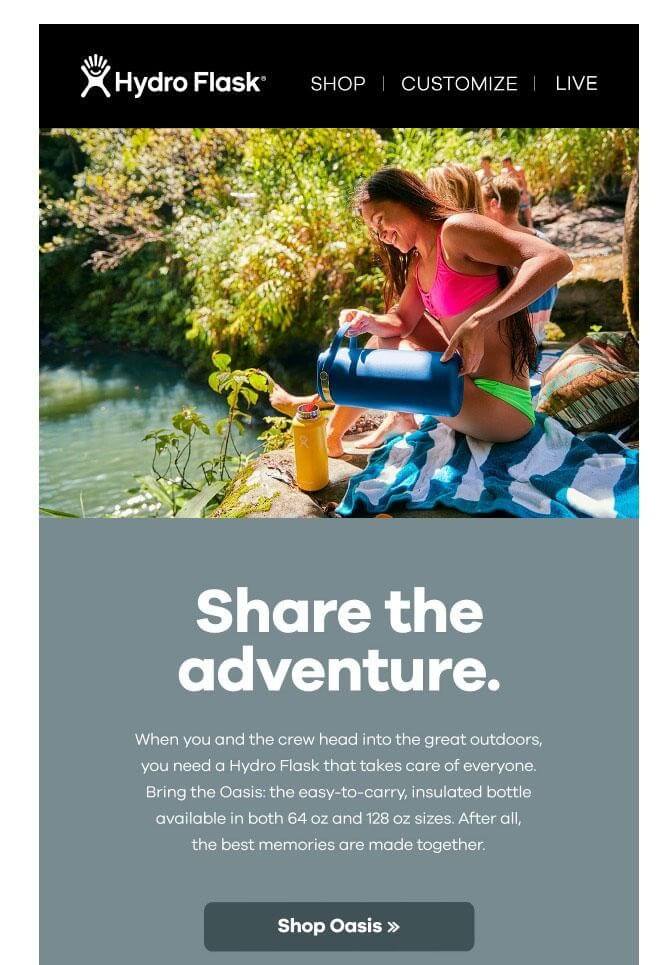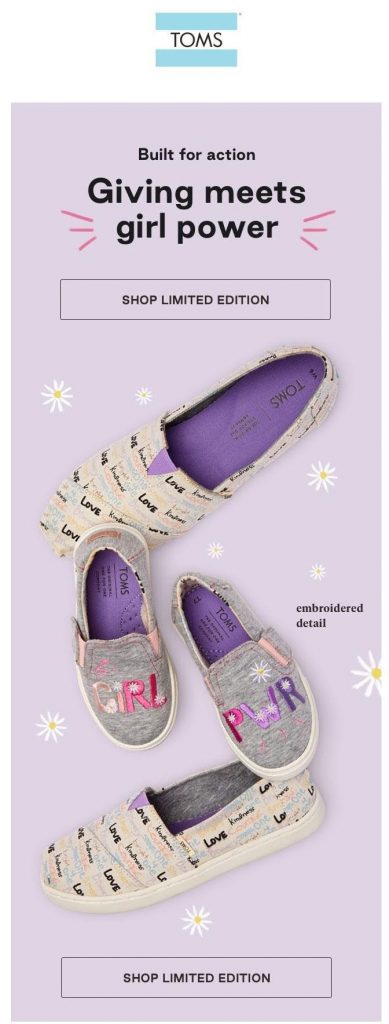Your marketing emails are products. You may not necessarily think of them that way—after all, your products are your products—but they are.
A product is, at its core, something offered to customers to satisfy a need or want. Just like the products you sell, your emails have to provide a value to your subscribers and customers and fulfill specific wants and needs.
That’s where Jobs to be Done (JTBD) comes in. In this article, we’ll dig into the JTBD framework and how you can utilize it to improve your email marketing and, as a result, your business as a whole.
What is Jobs to be Done?
To understand JTBD, first we have to look at some different ways you can group and think about your subscribers. When you combine these methods, you can develop a deeper, richer understanding of your core customers.
Verticals
Verticals are broad segments of your customers, defined along major demographic lines. For example, “women” is a vertical. Others include things like geography (“Canadian” or “West coast” are both verticals) or profession (“coders” is a vertical).
Personas
eCommerce buyer personas are customer sketches based on key demographic info. Personas combine a number of verticals to paint a picture of your key customer bases. Generally, they go deeper than broad overviews (“Our customers are single women aged 24 to 39 with a median household income over $60,000.”) and are presented as thumbnail sketches of fictional people (“Julie is a single woman aged 28, living in Chicago and working as a junior account executive. She makes $65,000 per year, has a bachelor’s degree, and takes two vacations per year.”)
Presenting them that way gives the personas a richness that allows you, as a marketer, to really visualize who is on the receiving end of your messages.
Jobs to be Done
JTBD looks less at demographics and numbers and more at, well, feelings. The JTBD theory says every product has a “job” and customers “hire” the product for that job—and it digs into why a customer chose to hire your product for the job.
For example, a customer didn’t buy an Xbox One because she’s a woman in her 30s living in an urban area—she bought it because she found video games were a great way to connect with her kids.
How does JTBD work with verticals and personas?
JTBD by itself is valuable, because it gets at the heart of how and why your products matter to your customers—but it’s not quite enough. Nor are verticals and personas quite enough on their own, as they tell you the “who” but not the “why.” It’s the combination that gives you the full picture.
If you think of all your customer information as a house, then JBTD is the foundation. If you try to build your house on personas or verticals, the ground starts to get squishy. Jobs cut across demographics, though, and give you a solid footing. Personas are the rooms. These are the thumbnail sketches of your customers. They’re all built on that same foundation of jobs, but they don’t always interact with each other. Verticals are the roof. They surround like an umbrella and tie all the rooms together into one structure.
When you use all three together, you begin to understand not only why people are buying your products, but when and where to find them.
Then you can take all that knowledge and start to sketch out new approaches to your products—whether that means the ones you sell or your email marketing “products.”
How to talk to your customers
JTBD requires a deep dive into your customers’ psyche—and that means conducting thorough interviews with select customers to really figure out what motivates them.
Step one: Pre-qualify your potential interviewees
It’s not possible to speak to every single one of your customers, let alone do a lengthy JTBD interview with each of them. That means you have to strategically select the customers you want to interview.
Here, again, is where verticals and personas come in. To select which customers you’d like to interview, the first step is to survey your customers to gather some key demographic info.
Then, based on the results, you can determine which customers you want to interview further for JTBD. You’ll ideally want to grab customers who fit your most common personas; for example, if the majority of your surveys seem to be coming from men with kids, you’ll want to do JTBD interviews with men with kids. You should also seek out people that match your picture of your ideal customer; if you want to target people with household incomes above $100,000 or people who work in marketing, you’ll want to do JTBD interviews with survey respondents who match those verticals.
One thing to keep in mind: things get hazier the further you get from sign-up, which means JTBD interviews tend to be more effective with people who signed up to your list recently.
Step two: JTBD interviews
The heart of the JTBD process is an interview where you ask strategic questions to get the information you’re looking for.
The first goal of the interview is to get a customer’s “first thought.” The first thought encapsulates the internal and external factors that motivated the customer to hire your product. (Or, in the case of email marketing, sign up for your list.)
Once you hit the first thought, then you’ll want to follow the path of events and circumstances that took the customer from that thought to their sign up. Those are called the “consideration set” and the textbook version of the path goes: First thought, passive looking, active looking, deciding, consuming, satisfaction.
That path could, and probably will, be truncated or accelerated for email marketing, since signing up for an email list is a less involved decision than making a purchase—but there’s still a decision-making journey involved, even if it’s compressed.
In a JTBD interview, you need to keep digging and trying different angles until you get thoughtful, deep answers. JTBD aren’t quick—they often take about 45 to 60 minutes—but in that span, you should be able to really learn about a customer’s true motivations. What was the “first thought” that left them to think about signing up and what was the “consideration set” of factors that led to them “hiring” your email list to complete a job.
Step three: Analyzing your JTBD interview results
Once you’ve completed your series of JTBD interviews, it’s time to look at your results as a whole and look for emerging patterns. From there, you’ll need to think hard about those patterns and what they really mean.
Let’s say your eCommerce store sells ski accessories. And in your JTBD interviews, multiple people mention they were motivated to sign up for your emails because they want to keep up with new products for their next big ski trip. So sure, that means they want you to keep them updated, and you should promote new products as they come in, especially trendy ones. But there’s more to it than that. What’s the real underlying motivation there? It sure sounds like it’s coming from someone who loves skiing but, 95 percent of the year, is working and not on a ski vacation. You’re not just keeping them up-to-date on products—the job of your emails is also to keep them connected with that ski lifestyle they crave so much. So skiing-related content, pictures, and stories might also be why they hired your emails.
These are the kinds of details you should try to dig at during your interviews, though even if they don’t say so explicitly, you can make inferences, especially as you see patterns emerge. It’s worth noting that people can hire products to accomplish more than one job.
Using your results to write better emails
Now that you have more information on your customer verticals, personas, and JTBD motivations, you can use the result to create better emails.
1. Focus hard on your emails serving their job (and the jobs of your product)
You need to balance selling your product in your emails with remembering why your customers have hired your emails. Fortunately, in most cases, there will be overlap between the value of your products and the value of your email. After all, your products have jobs too, and ultimately, serving those jobs is what’s going to make people spend money at your store. If your marketing, messaging, and product are all properly aligned, the jobs your emails serve should seamlessly flow into the jobs your products serve.
I’m signed up for the email list for Mr. Porter, which is a men’s style eCommerce site. I hired their emails because they know style and, I admit, I don’t know it that well. So their emails aren’t just selling their products, they’re also serving as the stylist I don’t have. Mr. Porter knows that, and serves that job not just with their content-based emails (like the third email below), but with their sales emails as well.

2. Use evocative imagery
Once you know the job your emails are serving, you can begin to select images in a more strategic way. Use your images to paint a picture that matches the customer’s motivation for subscribing and, in the process, you’ll sell your product and make your customer feel good.
Check out what Hydro Flask does with their emails. Yes, their images always feature their water bottles—but also regularly feature those water bottles in use during cool adventures like mountain biking, hiking, exploring, or, in the case below, hanging out with friends overlooking a secluded lake. That’s because Hydro Flask recognizes people haven’t hired their emails to see pictures of water bottles—people sitting at their desks in offices have hired their emails to remind them of how fun their outdoor life will be with those water bottles.

3. Segment by personas and verticals for different email “jobs”
Your findings may show that people in different verticals and in different persona groupings have very different hiring reasons. If you sell pizza, exhausted parents could see the pizza as relief because it’s a fast, easy meal that everyone likes and doesn’t require anyone doing dishes after. But college kids don’t care about finding a meal kids like or doing dishes (from what I recall from college, people mostly eat off Frisbees or just rest food directly on their stomachs)—their motivation could be that pizza is a fun party food.
So, if you find your emails are serving different jobs to different sections of your audience, you can segment your marketing emails with different images, copy, and calls-to-action that match the needs of each group. You can hire a writer from ClassyEssay a top writing service to come up with catchy titles and create a great email copy for your marketing campaign. Here’s an example from Toms serving the segment of their audience who subscribed because they like the company’s values, social conscience, and empowerment vibe.

4. Make sure your emails that don’t directly serve the job still include some reference to it
Not every email you send can speak directly to the job to be done, but even in those cases, it’s still smart to remind your customers you’ve still got an eye on that job.
Here’s an email from Moleskine for World Book Day promoting their published books about design, architecture, and literature. None of that matches the reason I hired Moleskine’s emails. My motivation? I want to feel like a cool writer and picture myself kicking back to write long-hand in a really nice notebook. Fortunately, they don’t neglect that job—the email serves it right as its secondary call-to-action comes under a picture of, yes, a writer with a nice notebook enjoying a croissant.

Wrap up
You can improve your email marketing strategy if you start viewing your emails as products that are serving a specific job for your subscribers. Once you figure out their underlying motivation for “hiring” your emails, you can begin to tailor your content and images to fulfilling that job. And, in the process, your emails should do a better job of selling your actual products and bringing in more revenue to your eCommerce store.



Sam Greenspan
Latest posts by Sam Greenspan (see all)
Sales Funnel and Autoresponders: How it Brings More Conversions for your Business
Everything you need to know about Transactional Emails